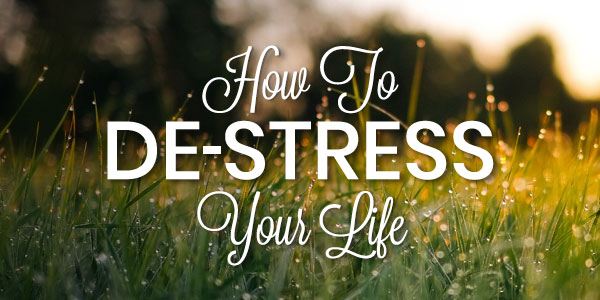RELAX AND DE-STRESS: free techniques

Relax and de-stress, The situations and pressures of everyday life can take a significant toll on our physical, mental, and emotional well-being. From depression, irritability, and anxiety to physical symptoms like nausea, dizziness, and chest pain, stress can manifest in a variety of ways. Recognizing the importance of taking time to relax and unwind is crucial for mitigating the negative effects of stress and maintaining a healthy, balanced life.
Relax and de-stress, Fortunately, there are numerous techniques and practices we can explore to cultivate a state of relaxation and inner peace. National Relaxation Day, celebrated annually on August 15th, serves as a timely reminder to prioritize rest, recovery, and self-care. This unofficial holiday aims to raise awareness about the profound health benefits of relaxation and its vital role in our overall quality of life. This National Relaxation Day, why not embark on a journey of self-discovery and try out new ways to relax your mind and rejuvenate your body? Here are 6 techniques that can help you achieve deeper relaxation and well-being:
relax and de-stress, One of the simplest and most accessible ways to unwind and relax is to step outside and immerse yourself in nature. Spending time outdoors has been shown to have a multitude of physical and emotional benefits. The act of connecting with the natural world can make you feel calm, centered, and deeply relaxed. Whether it’s a leisurely stroll through a park, a hike in the woods, or simply sitting and observing the beauty around you, the restorative power of nature is undeniable.

relax and de-stress, Going outside and connecting with the natural environment can have a profoundly positive impact on your mental and physical well-being. The fresh air, the sights and sounds of nature, and the opportunity to engage in physical activity can all contribute to a sense of tranquility and inner peace. By making time to get outside and appreciate the beauty of the world around you, you can cultivate a profound sense of relaxation and rejuvenation.
Here is an elaborated and longer version of the original passage: Dealing with the Stresses of Everyday Life In our fast-paced, modern world, it’s no secret that many of us struggle with the stresses of everyday life. From demanding jobs and hectic schedules to family responsibilities and personal challenges, the pressures can quickly become overwhelming. However, it’s crucial that we find healthy ways to manage this stress and prevent it from taking a serious toll on our mental and physical wellbeing. Reconnecting with Nature One of the most effective ways to alleviate everyday stress is to spend time in nature.
While it may not magically make your to-do list disappear, being outdoors has been shown to have a profound calming effect on the mind and body. relax and de-stress, The sights, sounds, and smells of the natural world help to quiet the chatter of our busy brains, relax and de-stress, allowing us to reset and recharge. Even a short stroll through a local park or a few moments gazing out at a tranquil body of water can work wonders in reducing your stress response.
Table of Contents
And the benefits don’t end when you return to your regular routine – you’ll find that you’re able to tackle your tasks with a renewed sense of focus and clarity, rather than feeling completely overwhelmed. If you’re someone who struggles to find the time to get outside regularly, try bringing a little piece of nature into your workspace. relax and de-stress, Adding a small potted plant or a tabletop water fountain to your desk can provide a soothing visual and auditory experience that helps to counteract the stresses of the day.
This practice, which involves focusing your attention on the present moment and cultivating a sense of calm, has become increasingly popular in recent years due to its profound relaxation benefits. During a mindfulness meditation session, the goal is to gently redirect your attention whenever your mind starts to wander, allowing you to achieve a deeper state of tranquility. As you learn to become more attuned to the sensations in your body, you’ll often find that areas of tension and discomfort start to melt away. Consistent mindfulness meditation can have a lasting impact on your overall stress levels.
relax and de-stress, Over time, you’ll become better and better at quickly putting yourself into a deeply relaxed state, which can help you navigate even the most challenging situations with a greater sense of equanimity. The Healing Power of Heat Therapy In addition to the mental and emotional benefits of nature and mindfulness meditation, there are also powerful physical techniques for alleviating the effects of stress on the body. One such method is heat therapy, which uses the soothing power of warmth to address muscle tension and pain.
When you’re feeling the strain of stress manifesting in tight, achy muscles, a warm compress or heating pad can provide welcome relief. The heat helps to dilate the blood vessels, improving circulation and allowing the muscles to relax and release their built-up tension. This increased blood flow also brings more oxygen and nutrients to the affected areas, facilitating the healing process. By incorporating heat therapy into your self-care routine, either through a warm bath, a heating pad, or even a simple warm towel compress, relax and de-stress, you can help your body recover from the physical impacts of daily stress and prevent it from causing further discomfort or injury.
relax and de-stress, Remember, managing the stresses of everyday life is an ongoing process, and it’s important to experiment with different techniques to find what works best for you. By making your mental, emotional, and physical wellbeing a priority, you’ll be better equipped to handle the challenges that come your way and maintain a greater sense of balance and resilience. Original passage: “On your tight spots for at least 15 minutes and up to 2 hours for the deepest sense of relaxation. It’s important not to use a heat source that’s so hot it burns your skin.
is a relaxation tool you can safely use on a daily or weekly basis to help you unwind.” Elaborated passage: Applying heat therapy to your tight or tense muscle areas can be an incredibly effective way to promote relaxation and soothe discomfort. Whether you’re dealing with persistent muscle knots, lingering soreness, or simply the general stresses of everyday life, incorporating heat therapy into your self-care routine can make a significant difference.
relax and de-stress, For maximum benefit, it’s recommended to focus the heat on your problem areas for a minimum of 15 minutes, but you can safely continue the treatment for up to 2 hours to achieve a deeper state of relaxation. The key is to find the right temperature that feels comfortably warm, without causing any burning or discomfort to your skin. This type of heat therapy can be easily incorporated into your daily or weekly routine, providing you with a simple yet powerful tool to help you unwind, release tension, and achieve a greater sense of overall well-being.

Whether you opt for a heating pad, warm bath, or any other heat-based modality, allowing your muscles to absorb that soothing warmth can work wonders for both your physical and mental state. Remember, the goal is to provide your body with a gentle, therapeutic heat that encourages your muscles to relax and let go of any built-up stress or tightness. relax and de-stress, By making heat therapy a regular part of your self-care practices, relax and de-stress, you can unlock a deeper level of relaxation and rejuvenation, empowering you to tackle the demands of your daily life with renewed energy and focus.
Stress can be a significant burden on our mental and physical well-being, but there are various tools available to help manage it. Stress balls and fidget spinners have become increasingly popular as portable, accessible stress-relief solutions. When tension rises, these small, tactile objects provide an outlet for restless energy and nervous habits. relax and de-stress, The rhythmic squeezing and releasing motions of a stress ball, for example, can mimic and release the tightness in our tense muscles.
The repetitive spinning of a fidget spinner can also have a calming, almost meditative effect, helping to redirect our focus and ground us in the present moment. Another innovative gadget for addressing stress is the wearable stress monitor. These devices track physiological indicators like heart rate and breathing patterns, which can fluctuate in response to stress. When the monitor detects a spike in these metrics, indicating a state of heightened anxiety, it sends an alert to the user.
relax and de-stress, This prompts the individual to then consciously employ stress-reduction techniques, such as deep breathing exercises, progressive muscle relaxation, or even short meditation sessions. By providing real-time biofeedback and encouraging proactive coping, these stress monitors empower users to better understand their own stress responses and develop effective self-regulation strategies.
While stress can sap our energy and motivation, physical activity can actually be a powerful antidote. Exercise has both invigorating and soothing effects on the body and mind. After a workout, the body experiences a decrease in the production of stress hormones like adrenaline and cortisol. Simultaneously, the brain releases “feel-good” endorphins that elevate mood and reduce pain perception. This neurochemical shift helps alleviate the mental and physical symptoms of stress.
relax and de-stress, Beyond these physiological benefits, exercise provides an important mental respite from stressful situations or thoughts. By redirecting your focus onto the movements of your body, you become more present and aware of your physical sensations.
This kinesthetic awareness can reveal areas of muscle tension or tightness that need attention and relaxation. The more you tune into your body through physical activity, the better equipped you’ll be to identify and address the physical manifestations of stress. Over time, this mind-body connection can enhance your overall capacity for stress management and relaxation.
Yoga is one calming practice. Not only is yoga a form of physical activity, but it also combines mindfulness with deep breathing to put you into a relaxed state both physically and mentally. Yoga is also a versatile activity. You can develop a simple yoga practice in as little as 10 minutes a day or practice for up to an hour whenever you have time. relax and de-stress
You can practice yoga in the morning to center yourself before work, or before bed to prepare your body for deep sleep. You can also take time out mid-day to do a few poses and rebalance your nervous system. Elaborated passage: Yoga is a transformative practice that offers a holistic approach to well-being. relax and de-stress, It is not just a form of physical activity, but a powerful tool for cultivating mindfulness, balance, and inner peace.
By combining gentle movements, focused breathing, and meditation, yoga has the ability to transport the practitioner into a deeply relaxed state, both physically and mentally. relax and de-stress, One of the greatest advantages of yoga is its versatility. Whether you have just a few minutes to spare or an hour to devote to your practice, yoga can be tailored to fit your schedule and needs. A simple 10-minute sequence can help you start your day with clarity and focus, while a more extended practice can provide a profound sense of restoration and rejuvenation.
Practicing yoga in the morning can set the tone for a productive and centered day, while an evening session can help you unwind and prepare your body for a restful night’s sleep. Moreover, the benefits of yoga extend beyond the confines of your home or studio. relax and de-stress, Taking a few moments during the workday to flow through a sequence of poses can help rebalance your nervous system, alleviate stress, and provide a much-needed mental break.

This midday practice can boost your energy, enhance your mood, and enable you to return to your tasks with a renewed sense of focus and clarity. relax and de-stress, Regardless of when or how you choose to incorporate yoga into your life, the practice offers a powerful reminder to slow down, breathe deeply, and connect with the present moment. By cultivating this mindful awareness, you can unlock the transformative potential of yoga and experience its profound impact on your physical, mental, and emotional well-being.
Whenever you find it particularly difficult to unwind, it might be because you’re overwhelmed. There are times in our lives when the sheer volume of responsibilities, worries, and emotions can feel like a heavy weight on our shoulders, making it challenging to relax and regain a sense of peace. relax and de-stress Writing down your thoughts can be a powerful tool to help you navigate these overwhelming moments.
By putting pen to paper and allowing your thoughts to flow freely, you can gain clarity on how you truly feel about a certain situation. This process of self-expression can be incredibly cathartic, as it provides an outlet for the emotions and concerns that may be weighing you down. relax and de-stress, As you write, you can begin to sort through the tangled web of your thoughts, identifying the root causes of your stress and finding ways to address them.
relax and de-stress, Getting your thoughts onto paper is a way of emptying the mind, creating space for you to take control of the situation instead of allowing your stress to control you. This can be especially beneficial when you’re feeling powerless or consumed by anxiety. By externalizing your thoughts, you can step back and gain a fresh perspective, which can then inform the steps you take to manage your stress more effectively.
Journaling is most effective when you allow your writing to freeflow, without worrying about making it perfect or structuring it in a certain way. The goal is simply to express yourself authentically, allowing the words to flow from your mind to the page. Don’t get hung up on things making sense or being grammatically correct – just let your emotions and thoughts guide your pen.
Relax and de-stress, You can further enhance the benefits of expressive writing by combining it with other relaxation exercises, such as deep breathing or meditation. These practices can work in tandem to release tension, calm the mind, and foster a greater sense of inner peace. By engaging in a holistic approach to self-care, you can better navigate the challenges of life and maintain a healthy, balanced state of being.Allow yourself the freedom to be imperfect, to be messy, to be fully and authentically human. In doing so, you’ll unlock a powerful tool for self-discovery, growth, and the cultivation of inner peace.





